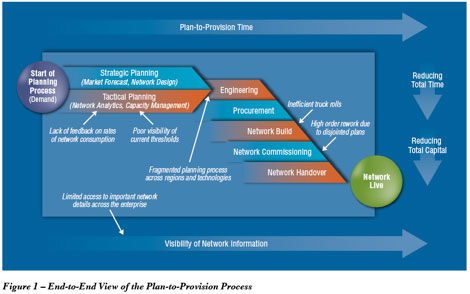
article page
| 1 | 2 | 3 | frequencies and limits of LTE technology. Backhaul planning platforms will also need upgrading to support IP configuration and QoS.
Interfaces directly between radio planning, logical demand and build out functions will be required to reduce errors in handover. This will require speeding up the planning cycle-time in support for new equipment rollout.
The introduction of policy platforms [such as Policy and Charging Rules Function (PCRF)] prior to LTE is expected as a method to make the transition for the user as smooth as possible. Hence, there will be the need to move from protocol based charging (used today) to more flexible dynamic charging model with location, time and service being used; for example to determine the rate for the service. This will require upgrades or replacement of the pre-paid and rating platforms used today.
Also the use of IP will require the extension of fault and performance tools from the core to the access network. Some of these tools will need to be enhanced to support the number and type of connections within the LTE network. The wide definition of a service will further increase the need for true
|
|
The use of IP will require the extension of fault and performance tools from the core to the access network |
|

Service Quality Management. This shift will increase the need for trend and predictive functions to enable proactive early warning of service issues within a region prior to a full service impact occurring.
Conclusion
The biggest impact within the OS systems will be in the planning and service quality management areas. Planning will need greater integration between radio and backhaul systems and departments. The roll out of LTE to support the demand from Mobile Internet and reduce overall costs for operators will be a fine balancing act over the next five years. In meeting the demand for high-bandwidth, operators will need to use better processes and find common practices that reduce the costs of managing the roll out of the mobile backhaul network. Smart vendors continue to invest in consultancy, systems and partnerships to further simplify and maximize the return on investment operators will obtain from the deployment of LTE technologies.
|
|
|

Click for larger image
article page
| 1 | 2 | 3 | |
|
|




